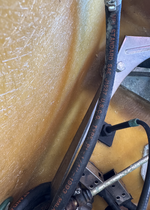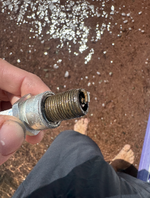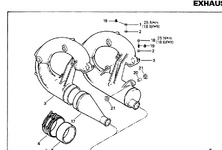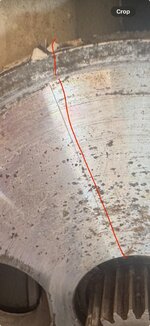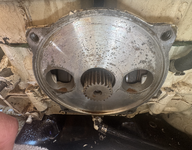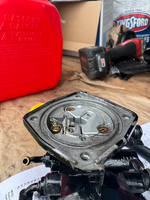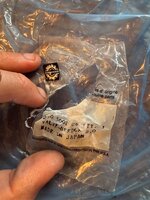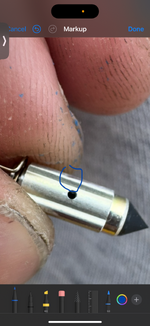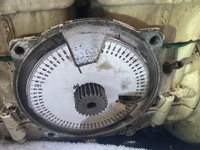I bought a 1993 GTX and it is my first jet ski. It was $1800 canadian with a trailer I am mechanically inclined but far from a mechanic...
I first had this jet ski out for about 1.5 hours and drove it at low throttle the entire time between a boat launch and my dock. I noticed it bogging down but after that ride saw the jet intake had a bunch of sea weed in it. I was scared taking it out for the first time and open ocean- I did not crack the throttle much during that first ride.
Onto the issues... I've had it out for a 25min and two 15 minute rides after that. The last two times i've really noticed the ski bogging down. Basically even when i pull the throttle to be more open, it does not respond or even dies out as i open the throttle more. The other issue is I've noticed a lot of oil in the hull. The previous owner was using synthetic sea-doo 2 stroke oil but i've swapped for the brown sea doo xps oil. I was thinking of adding UV dye to the oil to ID the leak. The fuel gague and speedo also do not work. Can you 3d print a new paddle wheel? There is also a decent amount of water in the hull that i've noticed though i'm not sure if some is from waves hitting the rear vents.
I've done a few things. The jetski was having trouble starting and I erroneously replaced the starter before realizing that the ground cable was not crimped properly. So, the jet ski has a new starter (Amazon- but i've kept the original starter), battery, solenoid and ground terminals.
I can't pinpoint the oil leak but it almost all appears to be the previous owner's oil. I don't see any of the brown oil in the hull.
More important though to me is the bogging. I've ordered:
1. Mikuni Carburetor rebuild kit (and tools- some pins, JIS screwdriver bits, and assembled a pop off tester). I did not buy needle valves... should I?
2. Fuel filter replacements
3. Fuel float replacement (fuel gague does not work)
4. New oil filter for when i replace oil lines
5. A carbon seal kit.
However I really want to just replace all of the oil and fuel lines to be done with it. I note that the sea doo manual says the oil lines are 6, 8 and 12mm and that the fuel lines are 6mm (is that ID or OD?). Issue is that I (A) don't know how much bulk length to buy of each (10ft, 25ft) and (B) am struggling to find suppliers in Canada.
I'm not sure what other cheap and easy maintenance I should do so that I can just enjoy this machine without worrying about it dying out. Any advice is appreciated.
I first had this jet ski out for about 1.5 hours and drove it at low throttle the entire time between a boat launch and my dock. I noticed it bogging down but after that ride saw the jet intake had a bunch of sea weed in it. I was scared taking it out for the first time and open ocean- I did not crack the throttle much during that first ride.
Onto the issues... I've had it out for a 25min and two 15 minute rides after that. The last two times i've really noticed the ski bogging down. Basically even when i pull the throttle to be more open, it does not respond or even dies out as i open the throttle more. The other issue is I've noticed a lot of oil in the hull. The previous owner was using synthetic sea-doo 2 stroke oil but i've swapped for the brown sea doo xps oil. I was thinking of adding UV dye to the oil to ID the leak. The fuel gague and speedo also do not work. Can you 3d print a new paddle wheel? There is also a decent amount of water in the hull that i've noticed though i'm not sure if some is from waves hitting the rear vents.
I've done a few things. The jetski was having trouble starting and I erroneously replaced the starter before realizing that the ground cable was not crimped properly. So, the jet ski has a new starter (Amazon- but i've kept the original starter), battery, solenoid and ground terminals.
I can't pinpoint the oil leak but it almost all appears to be the previous owner's oil. I don't see any of the brown oil in the hull.
More important though to me is the bogging. I've ordered:
1. Mikuni Carburetor rebuild kit (and tools- some pins, JIS screwdriver bits, and assembled a pop off tester). I did not buy needle valves... should I?
2. Fuel filter replacements
3. Fuel float replacement (fuel gague does not work)
4. New oil filter for when i replace oil lines
5. A carbon seal kit.
However I really want to just replace all of the oil and fuel lines to be done with it. I note that the sea doo manual says the oil lines are 6, 8 and 12mm and that the fuel lines are 6mm (is that ID or OD?). Issue is that I (A) don't know how much bulk length to buy of each (10ft, 25ft) and (B) am struggling to find suppliers in Canada.
I'm not sure what other cheap and easy maintenance I should do so that I can just enjoy this machine without worrying about it dying out. Any advice is appreciated.
Last edited:




